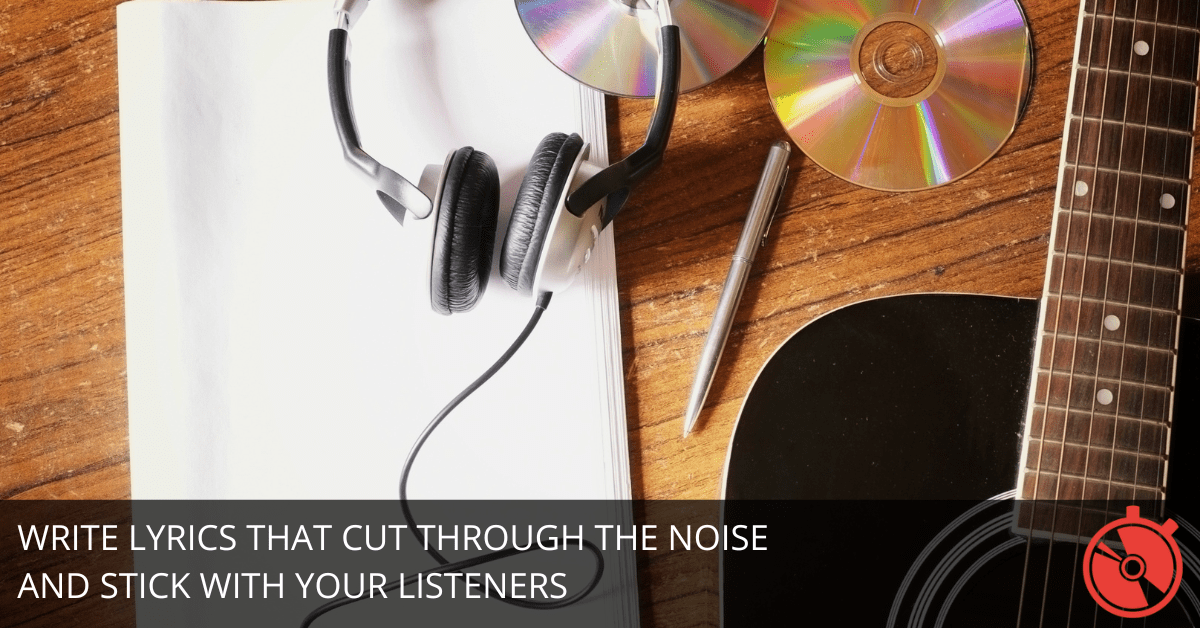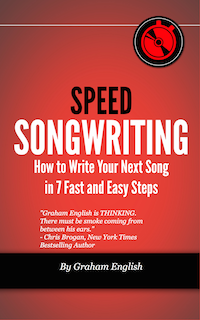
Clarity is the secret sauce that makes your lyrics resonate and stick.
A foggy line won’t inspire, and a vague chorus won’t linger. But clarity? It grabs attention, stirs emotion, and stays in the listener's head.
Here’s how to make your lyrics pop, connect, and stick around long after the song ends.
1. Replace Abstract Words with Concrete Images
We all love big, emotional words like "love," "hate," and "fear," but let’s be honest—they’re lazy placeholders. Your audience doesn’t feel "love"; they feel the moments that express it.
Instead of saying, "She felt love," paint the picture: "She hugged him tightly." Suddenly, it’s real. It’s something we can see and almost touch.
Try this exercise: take a line from your draft, circle every abstract word, and rewrite it with a concrete image or action. “I’m afraid of losing you” could become “I grip the phone, my hands shake.”
Clarity doesn’t just make your lyrics clearer; it makes them unforgettable.
2. Use Specific Nouns
General nouns are the enemy of vivid storytelling. "Car" is fine, but "beat-up red Chevy" is a memory. "Tree" works, but "twisted oak" paints a landscape.
When your lyrics lean too heavily on generic terms, the emotional punch gets diluted. The fix? Go specific. If you’re writing about heartbreak, don’t just say, “I walked through the park.” Say, “I walked past the rusted swing set where we kissed under the stars.”
The specificity gives your audience something to latch onto—a detail that makes the story feel like theirs.
Next time you write, challenge yourself to replace every general noun in a verse with something vivid and specific.
3. Keep It Simple but Not Simplistic
Clarity doesn’t mean dumbing things down—it means communicating complex emotions in an accessible way. The trick is to strip your lines of clutter without losing depth.
A common mistake? Packing too many ideas into one line. Instead of “I want to leave, but I can’t, because the thought of being alone scares me,” write, “I want to leave, but the thought of the empty bed keeps me here.”
Here’s a tip: read your lyrics aloud. If you’re tripping over words or losing breath halfway through a line, it’s too complicated. Pare it down. Simplify. And let the melody do some of the heavy lifting.
4. Use Strong Verbs to Drive Emotion
Adjectives are tempting, but they often dilute the power of your message. Instead of describing an action, choose verbs that carry the emotional weight.
“He walked slowly” becomes “He trudged.”
“She cried softly” turns into “She wept.”
Strong verbs don’t just make your lyrics clearer—they make them dynamic. For instance, instead of writing, “The waves were loud,” say, “The waves crashed against the shore.” Feel the difference?
Here’s a quick hack: scan your lyrics for any “is,” “was,” or “are” constructions and swap them for action-packed verbs. You’ll be amazed at how much life your lines gain.
5. Cut the Fluff and Leave Oxygen
Sometimes, less really is more. Crowding a verse with too many words or ideas can suffocate its emotional impact. Instead, leave space—both for the listener and for the melody.
Let’s take an overstuffed line:
“I’m standing in the rain, and it’s cold, and I feel like I’m losing my mind thinking of you.”
Now trim the excess:
“Standing in the rain, losing my mind.”
Notice how the simplicity gives the listener room to feel? That’s oxygen.
To practice this, take a dense verse and cut it in half. Focus on the most essential ideas and see how the lyric breathes with new life.
6. Anchor Big Themes with Recurring Imagery
Big themes like love, loss, or transformation can easily veer into cliché territory if they’re not grounded in something tangible. Recurring imagery can solve this by giving your song an emotional throughline.
If your song is about heartbreak, you might use water imagery to reflect drowning, waves, or tears. For example:
- Verse: “The tide is pulling me under.”
- Chorus: “I feel your waves crashing into me.”
- Bridge: “I’m treading water, but I’m sinking fast.”
This technique doesn’t just make your lyrics more cohesive—it creates a sense of progression and resolution.
To anchor your themes, pick one strong image and weave it through your song like a golden thread.
Final Thoughts
Enhancing lyric clarity isn’t about following rules—it’s about making your words hit harder, stick longer, and connect deeper.
Replace abstract words with images, specify your nouns, and cut the fluff. Use verbs that hit like a punch, leave space for listeners to breathe, and tie your themes together with recurring imagery.
Lyric writing is part art, part craft. These six techniques give you the craft, but it’s up to you to bring the art.

Enter your first name and email address below and click “GET ACCESS NOW!” to get the Speed Songwriting Cheat Sheet delivered to your inbox!
We guarantee 100% privacy. Your information will not be shared.

these ideas are fantastic.
Thanks, Joe! Glad you found them helpful. Hope they spark some great lyrics for you!
Thank you so much! Very informative such a great help, absolutely. From the Philippines.
Thank you! So glad it helped. Sending creative vibes to the Philippines!
Recurring imagery is something I never thought about. Wow. Very cool idea!! Thanks.
Glad it clicked for you!
That was helpful.
Cheers, Lloyd!
nice…this is the help i need
That’s great to hear. Appreciate you!